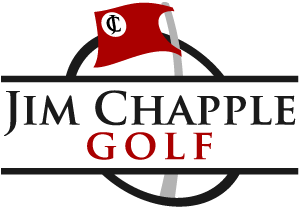What is Spine Aligning?
HOW Important is spine aligning?
The simple and easy way to explain Spine Aligning is finding the natural bending position of the golf shaft, which is the least point of resistance. By Spine Aligning your shaft the clubface will open and close when you want it to, not when the shaft wants it to.
The Physics of Spine Aligning (The Scientific Explanation)
Spine orientation, or spine aligning, the new process which measures a shaft under both constant and dynamic load to precisely locate shaft inconsistencies in the shaft wall thickness, shaft straightness, shaft roundness and shaft material.
When a shaft’s most predominant Spine is properly aligned in a neutral position, the shaft bends along the Principle Planar Oscillation Plane, the longitudinal plane of bending through which a shaft can move as closely as possible to a perfect straight line with no movement in any other direction. Thus, the shaft unloads or kicks forward during the golf swing. By decreasing the shaft’s movement in directions other than the final swing plane, Club Makers, can reduce shaft-induced miss hits by stabilizing the shafts torsional stiffness for more distance, accuracy and all around better shaft performance.
As Club Maker’s, we find the Spine of the shaft and place it into the club head, with the Spine Towards or Away from the target. We are ISOLATING the Spine so it is no longer a factor in the flex of the golf shaft. You now have the only two positive areas of the Golf Shaft.
All golfers put a bending force on the shaft at some point during the downswing. If the spine effect is moderate to severe in the shaft, when the shaft bends in response to the golfer’s swing force, the direction of bending of the shaft can move off the direction of bending, thus shifting the position of the club and clubface. This will cause the golfer to hit the ball more off-center than their swing might have otherwise ordained.
I was involved in testing the effects and differences of Spine Aligning versus not Spine Aligning, your golf shafts. This test involved using a Mechanical Golf Robot called Iron Byron to swing the driver.
1) A New Off of the rack Driver was put in the Mechanical Golf Robot and tuned up properly to hit 10 golf balls with a swing speed of 100 mph. The shot results were recorded on an impact sticker that was placed on the clubface of the driver.
2) Next the shaft was removed from the New Off the rack Driver head, Spine Aligned and reinstalled in the Driver head. The mechanical golf robot was again used to hit 10 more balls at the same swing speed of 100 mph using a new impact sticker to record the shots on the clubface.
The results were as follows:
1) Using the New Off the Rack Driver with the Shaft “NOT” Spine Aligned:
After the 10 shots were recorded on the face of the Driver there was an area on the impact sticker that measured approx. 1.9” in diameter
2) Using a New Off the rack Driver with shaft Spine Aligned:
After the 10 shots were recorded on the face of the driver there was an area on the impact sticker that measured approx. 0.7” (it looked like it had only hit one ball)
Conclusion
If a Mechanical Golf Robot hits 10 shots using a New off the rack Driver averaging nearly an inch off center of the club face that would cause any golfer to have an erratic shot pattern, to say the least.
But, after spine aligning the shaft on the New Off the rack Driver, the Mechanical Golf Robot hits 10 shots averaging less than 0.1” off center of the club face.
This confirms that it is very obvious all shafts in your set of golf clubs should be spine aligned if you want to improve your golf game and shoot lower scores!!
